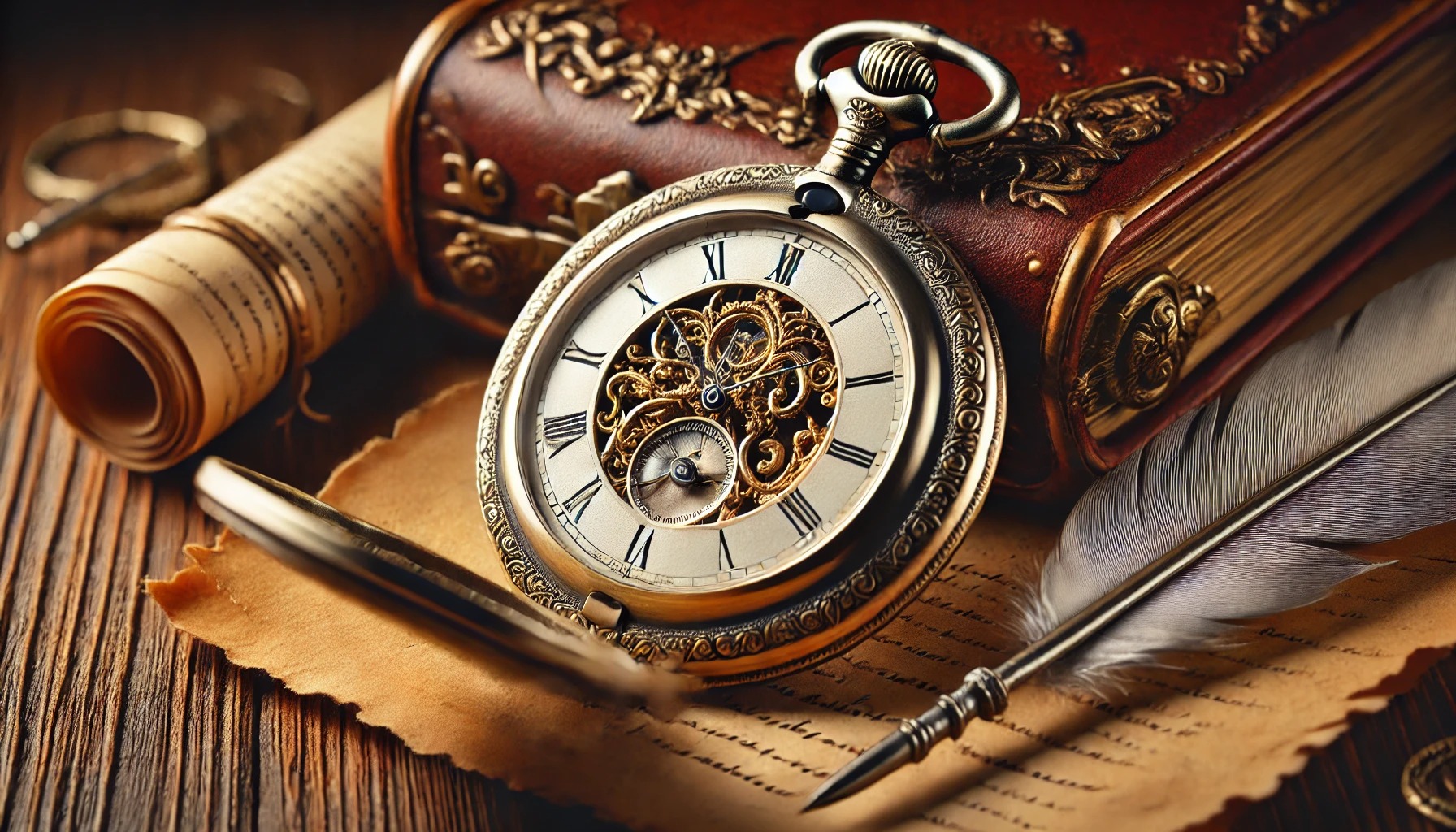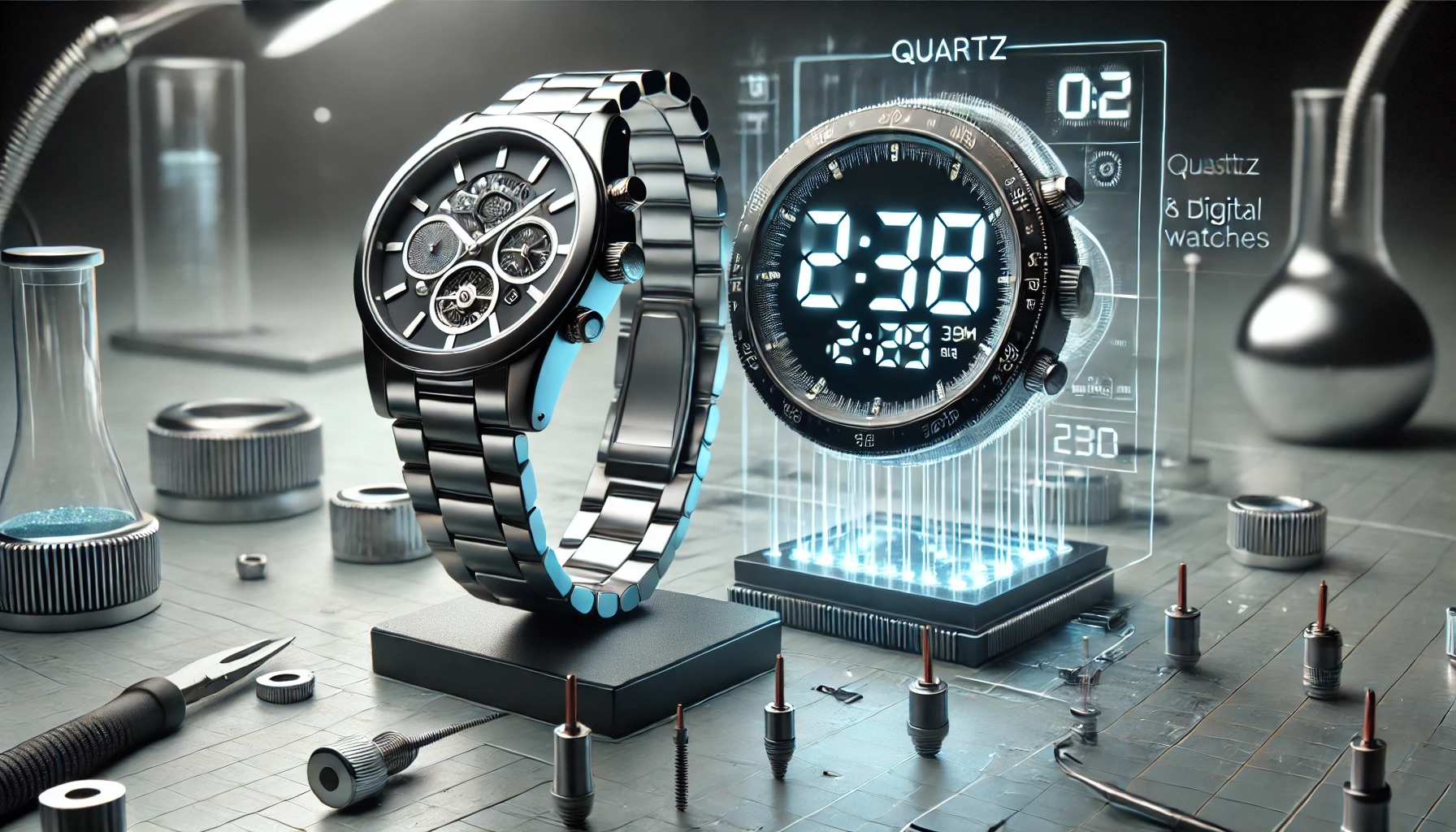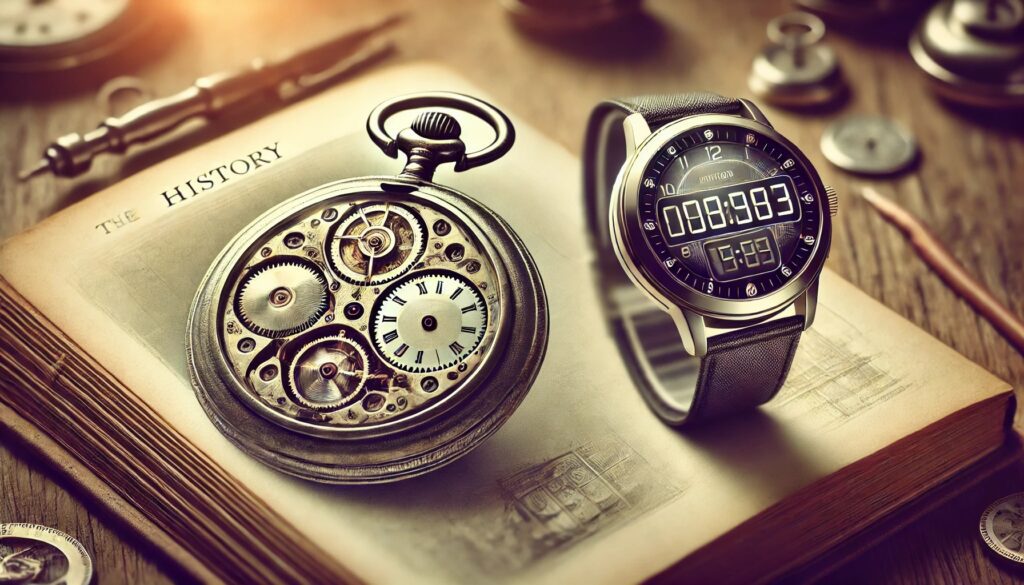Overview of Milestones in Watch History
| Year/Period | Event/Innovation | Significance |
|---|---|---|
| 3500 BCE | Sundials | Ancient Egyptians invent the first device for timekeeping using the shadow of the sun. |
| 1400 BCE | Water Clocks | Water clocks, used in Egypt and Babylon, allowed for more regular time measurement than sundials. |
| 13th Century | Mechanical Clocks | Developed in European monasteries, marking the invention of gear-driven timekeeping. |
| 16th Century | Pocket Watches | The first portable timepieces: gadgets of status and prosperity. |
| 1675 | Balance Spring | Christiaan Huygens’ invention improves accuracy in pocket watches. |
| 19th Century | Early Wristwatches | Wristwatches were initially fashion accessories for women, later used as military gadgets during WWI. |
| 1969 | Quartz Movement | Seiko introduces quartz watches, revolutionizing accuracy and affordability in timekeeping. |
| 1970s-1980s | Digital Watches | The rise of digital displays, with brands like Pulsar leading the trend. |
| 2010s-Present | Smartwatches | Combining digital technology with traditional wristwatch devices, smartwatches redefine functionality. |
From the very modest functions that watches have performed to evolve through the ages due to innovation and technological advancement, timepieces keep abreast with everything. What began as a straightforward means of measuring time has developed into an intelligent accessory—a symbol of precision, luxury, and style.
We take you through a brief history of the watch, starting from the first time-keeping devices to the modern wristwatch. Whether you are a timepiece enthusiast or have a curious interest in timekeeping history, this journey through time casts light on the detailed story behind one of humanity’s oldest and most enduring inventions. Watches have evolved from a humble beginning through years of innovation and technological change.
What was originally a device to measure time has evolved into a symbol of precision, luxury, and style. The history of timepieces is captivating, from the earliest mechanisms to the present-day wristwatch.
For the connoisseur of watches or the history enthusiast, this journey into time illuminates the complex tale behind one of humanity’s most resilient creations.
The Dawn of Timekeeping: Ancient Sundials and Water Clocks
The concept of time measurement can be traced back to the early ages, before watches were invented. Early methods of keeping time depended on nature and the environment.
- Sundials (3500 BCE): Likely the first timekeeping device. The ancient Egyptians invented it around 3500 BCE. A sundial used the position of the sun’s shadow to reflect time, allowing rough estimations throughout the day but not at night or in cloudy conditions.
- Water Clocks (1400 BCE): By about 1400 BCE, Egyptians and Babylonians built water clocks. Time was measured by the uniform flow of water from container to container, making them the first time-measuring devices independent of the sun.
These early devices laid the foundation for the mechanical clocks that would follow, setting timekeeping on its path to becoming an intrinsic part of everyday life.
Mechanical Watches: The Inventions of Timekeeping in the Middle Ages
As civilization developed, so did the need for more precise devices to display time. This led to the development of mechanical clocks, which revolutionized time measurement.
- Mechanical Clocks – Early Types (13th Century): Developed in European monasteries, these clocks were often installed in church towers to regulate prayer times, using weights, gears, and chimes to measure time.
- Spring-Driven Clocks (15th Century): The invention of the mainspring allowed for the miniaturization of clocks, creating table clocks and the first primitive pocket watches.
Mechanical clocks ushered in an era of more accurate timekeeping, spreading throughout Europe.

The Pocket Watch: A Renaissance Status Symbol
The pocket watch marked a significant evolution from its predecessor, the mechanical clock, becoming a stylish accessory throughout the late 16th century. It was the first time-keeping gadget that could be carried around, making time more personal.
- Invention of Pocket Watches (16th Century): The first pocket watches are attributed to German watchmaker Peter Henlein in the late 1500s. These early versions were large, cylindrical, and not highly accurate, but they symbolized prestige and status.
- Popularity in Europe: Pocket watches soon became a status symbol among European aristocracy, often intricately designed and made from precious materials. The housing of the watch itself was often as decorative as it was functional, with engravings and precious stones.
- Need for Balance Springs: While pocket watches were a significant advancement, they were prone to inaccuracies, which led to the need for balance springs, improving their precision.
Invention of the Balance Spring: Precision and Accuracy
The balance spring, or hairspring, was a crucial invention in watch history, greatly improving the accuracy of timekeeping.
- Invention by Christiaan Huygens (1675): Dutch mathematician and physicist Christiaan Huygens is credited with inventing the balance spring. The spring regulated the oscillations of the balance wheel, leading to much more precise timekeeping.
- Impact on Pocket Watches: The addition of the balance spring made pocket watches much more reliable, keeping time within a few minutes per day, solidifying their popularity throughout Europe and paving the way for wristwatches.
The Birth of the Wristwatch: Accessory and Function Combined
The wristwatch, as we know it today, originated from a combination of military necessity and the desire for easier timekeeping.
- Early Wristwatches (19th Century): The first wristwatches were primarily fashion accessories for women, adorned with jewels and more decorative than practical.
- Military Use during World War I: Wristwatches proved their practicality during World War I, as soldiers found it more convenient to check time on the wrist rather than using pocket watches. Military-issued wristwatches were robust, featuring luminous dials for readability in low light.
- Popularity Post-War: After World War I, wristwatches became widely popular as both functional and fashionable timepieces. Brands like Rolex, Omega, and Longines mass-produced wristwatches for the civilian market, adding features such as waterproofing and chronographs.

Quartz and Digital Watches: Technology Advances
The 20th century saw major technological advancements in watchmaking, from quartz movement to digital displays, reshaping the industry.
- Quartz Revolution (1969): Seiko’s introduction of the quartz movement in 1969 revolutionized the industry. Quartz watches use an electronic oscillator regulated by a quartz crystal, offering far greater accuracy than mechanical watches while being more affordable.
- Digital Watches (1970s-1980s): The 1970s saw the advent of digital watches, starting with the Pulsar LED watch. These watches displayed time digitally using LED or LCD screens, offering a futuristic look that quickly gained popularity.
- Impact on the Watchmaking Industry: The rise of quartz and digital technology led to the “Quartz Crisis,” where many traditional Swiss watchmakers struggled. However, Swiss brands later restored the prestige of mechanical watch craftsmanship, leading to a resurgence in interest.
The Contemporary Period: Smartwatches and the Renaissance of Mechanical Watches
Today, the watch industry blends tradition with technology, offering a range from high-end luxury timepieces to advanced smartwatches.
- Smartwatches (2010s-Present): Companies like Apple, Samsung, and Garmin have transformed watches into multifunctional devices that track fitness, receive notifications, and even make calls, integrating the utility of a smartphone with the convenience of a wristwatch.
- The Luxury Watch Market: Despite digital advances, mechanical watches have maintained their allure. Brands such as Rolex, Patek Philippe, and Audemars Piguet are celebrated for their craftsmanship and heritage, appealing to collectors and enthusiasts who appreciate intricate movements and artisanal designs.
- Hybrid Watches: Hybrid watches merge classic analog designs with digital features, offering the style of traditional watches with the functionality of a smartwatch, including health tracking and notifications.
From tradition to cutting-edge technology, today’s watch market is diverse, catering to various tastes and lifestyles. Whether you prefer a classic mechanical timepiece or a feature-rich smartwatch, there’s a watch for every need.
The Allure of Watches is Immortal
The history of the watch reflects humanity’s desire to control time and integrate it into daily life. From ancient sundials and water clocks to mechanical, quartz, and digital watches, timekeeping devices have evolved to meet the demands of each era.
Watches have transitioned from essential tools to symbols of luxury, fashion statements, and status symbols. With the watch industry continuing to innovate, blending tradition with modern technology, the future looks bright.
Whether it’s a beautifully crafted Swiss watch or the latest smartwatch, the magic of timepieces lies in their ability to adapt, evolve, and remain relevant in a fast-changing world. Watches continue to hold a special place on our wrists, symbolizing the enduring connection between humanity and time.
For collectors, enthusiasts, and those who appreciate the art of timekeeping, watches remain timeless—a tribute to heritage, a mark of personal style, and a bridge between past and present.

